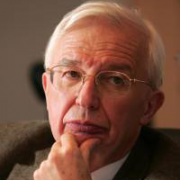Keynote Speaker

Nobel Laureate Prof. Jean-Marie Lehn
University of Strasbourg, France
Institut de Science et d'Ingénierie Supramoléculaires – ISIS
Keynote Speech
From Supramolecular Towards Adaptive Materials
Supramolecular chemistry is intrinsically a dynamic chemistry in view of the lability of the non-covalent interactions connecting the molecular components of a supramolecular entity and its resulting ability to exchange components. Similarly, dynamic covalent chemistry concerns molecular entities containing covalent bonds that may form and break reversibility, so as to allow a continuous modification in constitution by reorganization and exchange of building blocks. These features define a Constitutional Dynamic Chemistry (CDC) on both the molecular and supramolecular levels. One may define constitutional dynamic materials, as materials whose components are linked through reversible covalent or non-covalent connections and which may thus undergo constitutional variation, i.e. change in constitution by assembly/deassembly processes in a given set of conditions. Because of their intrinsic ability to exchange, incorporate and rearrange their components, they may in principle select them in response to external stimuli or environmental factors and therefore behave as adaptive materials of either molecular or supramolecular nature.
Applying these considerations to polymer chemistry leads to the definition of constitutionally dynamic polymers, DYNAMERS, of both molecular and supramolecular types, possessing the capacity of adaptation by association/growth/dissociation sequences. Supramolecular materials, in particular supramolecular polymers may be generated by the polyassociation of components/monomers interconnected through complementary recognition groups. Dynamic covalent polymers result from polycondensation via reversible chemical reactions. They may undergo modifications of their properties (mechanical, optical, etc.) via incorporation, exchange and recombination of their monomeric components. . These features give access to higher levels of behavior such as healing and adaptability in response to external stimuli (heat, light, medium, chemical additives, etc.).
CDC introduces a paradigm shift into the chemistry of materials and opens new perspectives in materials science. A rich variety of novel architectures, processes and properties may be expected to result from the blending of supramolecular and constitutional dynamic chemistry with materials chemistry, opening perspectives towards adaptive materials and technologies.

